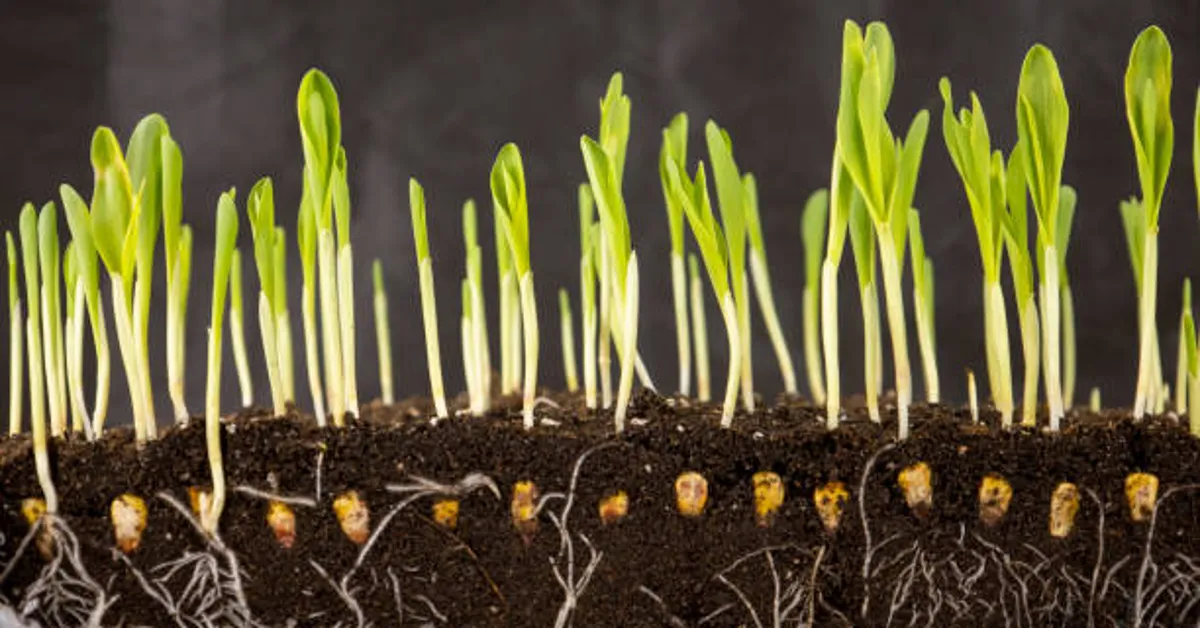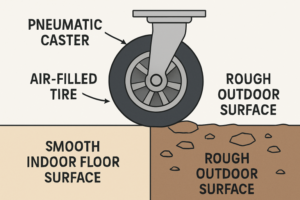The term germinatoire comes from the French word germination, which relates to the process through which a seed awakens from dormancy and begins its journey to becoming a plant. Germination is one of the most fundamental phenomena in the natural world, as it is the first step in the plant life cycle and the very foundation of agriculture, horticulture, forestry, and even ecological restoration. Without germination, the agricultural systems that feed humanity and sustain ecosystems could not exist.
This article provides an in-depth understanding of germinatoire by examining the science of germination, environmental requirements, techniques used to enhance it, challenges faced during the process, and modern technological advancements that have transformed seed germination practices. By the end, you will have a comprehensive view of how germinatoire plays a pivotal role in both natural ecosystems and human agricultural development.
What is Germinatoire?
The concept of germinatoire refers not only to the act of seed germination but also to the environment, conditions, and sometimes even specialized equipment designed to facilitate germination. A germinatoire can mean:
- The biological process – where a seed develops into a seedling by activating its internal metabolic pathways.
- The environment or chamber – a controlled setting such as a germination chamber used in laboratories and nurseries to optimize conditions.
- The conceptual stage – where researchers or farmers analyze seed viability and predict crop yields based on germination success rates.
In essence, germinatoire embodies both the natural and artificial means of ensuring that seeds transition successfully into seedlings.
Stages of Germination
Seed germination does not happen instantly; it occurs through distinct phases that activate the dormant embryo within the seed.
| Stage | Description | Key Biological Changes |
|---|---|---|
| 1. Imbibition | The seed absorbs water and swells. | Hydration activates enzymes, softens the seed coat. |
| 2. Lag Phase (Activation) | Metabolic activity begins without visible growth. | Enzymes break down stored food into sugars and amino acids. |
| 3. Radicle Emergence | The root (radicle) emerges from the seed coat. | Marks the first visible sign of germination. |
| 4. Hypocotyl/Plumule Growth | Shoot and leaf structures begin to grow. | Seedling starts photosynthesis as it emerges from soil. |
| 5. Seedling Establishment | The young plant develops leaves and roots. | Plant becomes autotrophic, relying on photosynthesis. |
Each of these stages depends on the right external conditions, without which the germinatoire process may fail.
Environmental Factors Influencing Germinatoire
For successful seed germination, several external factors play critical roles:
1. Water
Water is the most fundamental requirement. Seeds must absorb water to initiate metabolic activity. Too little water prevents germination, while too much may suffocate the embryo.
2. Oxygen
Seeds need oxygen for cellular respiration. Waterlogged soils often reduce oxygen availability, which is why poorly drained fields can stunt germination.
3. Temperature
Each plant species has an optimal germination temperature range. For example:
| Plant Type | Optimal Temperature Range (°C) |
|---|---|
| Cool-season crops (lettuce, spinach) | 10–20 |
| Warm-season crops (tomato, cucumber) | 20–30 |
| Tropical plants (papaya, okra) | 25–35 |
4. Light
Some seeds require light to germinate (photoblastic seeds), while others prefer darkness. Lettuce seeds, for instance, need light, whereas onion seeds germinate better in dark conditions.
5. Soil and Substrate
Soil texture, pH, and nutrient availability also play roles. Many nurseries use cocopeat, peat moss, or vermiculite as substrates in germinatoires for better water retention and aeration.
Types of Germination
Seeds germinate in different ways depending on species and structural adaptations. The two primary types are:
- Epigeal Germination – The cotyledons (seed leaves) are pushed above the soil surface. Example: beans.
- Hypogeal Germination – Cotyledons remain underground, and only the shoot emerges. Example: maize.
Other variations include vivipary (germination within the fruit, seen in mangroves) and cryptogeal germination (hidden cotyledons).
Role of Germinatoire in Agriculture
Germinatoire is critical to agriculture because successful germination determines the population density of crops in a field and ultimately influences yield. Farmers invest heavily in seed treatments, storage, and germination chambers to maximize crop establishment.
- Seed Quality Testing: Laboratories use germinatoire chambers to test germination rates before large-scale planting.
- Crop Uniformity: High germination ensures uniform growth and easier management.
- Resilience: Pre-germinated seeds are better prepared to withstand stress.
Traditional Germination Practices
Historically, farmers relied on simple but effective germinatoire methods:
- Direct Sowing: Seeds were planted directly into soil after preparation.
- Soaking in Water: Pre-soaking seeds improved germination speed.
- Ash or Sand Treatment: Provided aeration and prevented fungal attacks.
- Seed Scarification: Scratching or rubbing seeds with hard coats to facilitate water entry.
These traditional practices are still used in rural agriculture and remain vital where modern technology is unavailable.
Modern Germinatoire Techniques
With technological advancement, germinatoire has evolved into a highly scientific process. Some modern techniques include:
1. Seed Priming
Controlled hydration followed by drying to activate metabolism without radicle emergence. Improves speed and uniformity.
2. Hormonal Treatments
Application of growth regulators like gibberellic acid (GA3) enhances germination in seeds with dormancy.
3. Tissue Culture Germination
Used in horticulture and forestry for rare or endangered species, allowing germination in sterile conditions.
4. Germination Chambers (Germinatoires)
Specialized equipment with controlled temperature, humidity, and light cycles used for research and commercial nurseries.
5. Hydro-Priming and Osmotic Priming
Techniques where seeds are soaked in water or osmotic solutions to improve vigor and stress tolerance.
Challenges in Germinatoire
While germination seems simple, many factors can disrupt it:
- Dormancy: Some seeds require specific triggers (cold stratification, light, fire) to break dormancy.
- Pathogens: Fungal and bacterial attacks can destroy seeds.
- Poor Storage: Exposure to heat, humidity, and pests reduces viability.
- Abiotic Stress: Drought, salinity, and extreme temperatures hinder germinatoire.
Importance of Germinatoire in Ecology
Beyond agriculture, germinatoire plays a role in:
- Reforestation Projects: Ensuring high germination rates of tree seeds helps restore degraded landscapes.
- Conservation Biology: Rare and endangered plants depend on successful seed germination strategies.
- Ecosystem Balance: Germination ensures plant succession, food chain stability, and soil fertility.
Practical Applications of Germinatoire
| Field | Application |
|---|---|
| Agriculture | High-yield farming, crop establishment. |
| Horticulture | Flower and vegetable nurseries. |
| Forestry | Plantation of timber and fruit trees. |
| Research | Studying seed physiology and genetics. |
| Biotechnology | Tissue culture and genetic modification experiments. |
Tips for Successful Germination at Home
For gardeners and hobbyists, practicing germinatoire can be rewarding.
- Always select fresh, viable seeds.
- Use sterile soil mixes to prevent disease.
- Pre-soak hard seeds overnight.
- Maintain consistent temperature and moisture.
- Provide adequate but gentle light.
Future of Germinatoire
With climate change and growing population pressures, germinatoire will remain central to food security. Future directions include:
- Smart Germination Chambers: Equipped with AI and IoT sensors for precision agriculture.
- Biopriming with Microbes: Using beneficial microbes to enhance stress tolerance.
- Nanotechnology Applications: Nanoparticles improving water and nutrient absorption.
- Seed Banks and Cryopreservation: Long-term germination assurance for biodiversity conservation.
Conclusion
The concept of germinatoire encapsulates one of nature’s most essential and fascinating processes—seed germination. From ancient farming methods to advanced biotechnology, the journey of a seed to a seedling has been studied, nurtured, and optimized by humans for thousands of years. Today, germinatoire not only supports global agriculture but also plays a vital role in biodiversity, ecological restoration, and food security. As science advances, germinatoire will continue to evolve, ensuring that the seeds of today can sustain the generations of tomorrow.
ALSO READ: Acceleration City: A Blueprint for the Future of Urban Growth
FAQs
1. What does germinatoire mean?
Germinatoire refers to the process of seed germination, the environment required, or even chambers used for controlled germination.
2. Why is germination important in agriculture?
It ensures successful crop establishment, higher yields, and uniform growth, which are vital for sustainable farming.
3. What conditions are essential for seed germination?
Seeds need water, oxygen, optimal temperature, light (in some cases), and suitable soil or substrate.
4. How do modern germination chambers work?
They provide controlled temperature, humidity, and lighting, allowing consistent and predictable germination rates.
5. Can all seeds germinate immediately after planting?
No, some seeds have dormancy mechanisms and require treatments like scarification or stratification to germinate.









